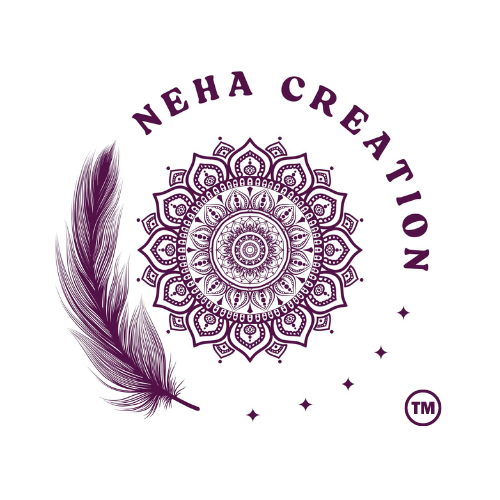Introduction
Mandala art has captivated artists and enthusiasts for centuries, symbolizing harmony, balance, and mindfulness. In today’s digital age, artists have access to both traditional handmade techniques and digital tools for creating intricate mandalas. While digital mandala art offers speed and versatility, traditional handmade painting remains an irreplaceable experience. This blog explores the differences between handmade and digital mandala art and highlights why traditional painting still holds significant value.
What is Mandala Art?
Mandala art is a geometric design that symbolizes the universe, spirituality, and mindfulness. Derived from the Sanskrit word for “circle,” mandalas often feature intricate patterns that promote focus, meditation, and creativity. Whether created using pen and paper or digital software, mandalas serve as a powerful tool for self-expression and relaxation.
Handmade Mandala Art: The Beauty of Tradition
1. Unique and Authentic Expression
Handmade mandala art is deeply personal, with each stroke reflecting the artist’s emotions, thoughts, and creativity. Unlike digital designs that can be easily replicated, every handmade mandala is one-of-a-kind, making it a unique piece of art.
2. Therapeutic and Mindful Process
The process of drawing or painting mandalas by hand encourages mindfulness and relaxation. The repetitive patterns and intricate details help artists enter a meditative state, reducing stress and promoting mental clarity.
3. Textural and Sensory Appeal
Traditional mandala paintings offer a rich sensory experience. The texture of paper, the feel of brushes or pens, and the interaction with colors provide a tangible connection between the artist and the artwork, making it more immersive and satisfying.
4. Skill Development and Artistic Growth
Creating mandalas by hand requires precision, patience, and artistic skills. Artists develop better hand-eye coordination, spatial awareness, and attention to detail, which contributes to overall artistic growth and mastery.
5. Cultural and Spiritual Significance
Handmade mandala art has deep-rooted cultural and spiritual importance in Hinduism and Buddhism. The traditional process of creating mandalas aligns with ancient artistic traditions, preserving the authenticity and spiritual essence of the art form.
Digital Mandala Art: The Modern Approach
1. Efficiency and Speed
Digital tools allow artists to create mandalas quickly with features like symmetry rulers, undo options, and layers. This efficiency is ideal for commercial projects, digital prints, and rapid prototyping.
2. Versatility and Customization
With digital software, artists can experiment with endless color palettes, brush effects, and design modifications. Digital mandalas are easy to edit, resize, and adapt for different mediums like posters, apparel, and social media graphics.
3. Accessibility and Portability
Digital mandala art eliminates the need for physical materials like paper, brushes, and paints. Artists can create stunning designs anytime, anywhere, using a tablet or computer, making it convenient and eco-friendly.
4. Perfect Symmetry and Precision
Software like Adobe Illustrator, Procreate, and CorelDRAW enables artists to achieve flawless symmetry and intricate details with precision. This is beneficial for commercial artists who require high-quality, reproducible designs.
5. Collaboration and Sharing
Digital mandala art is easy to share across social media, online portfolios, and digital marketplaces. Artists can collaborate, sell prints, and reach a global audience without the limitations of physical artwork.
Handmade vs. Digital Mandala Art: Key Differences
| Feature | Handmade Mandala Art | Digital Mandala Art |
|---|---|---|
| Creativity | Unique, personal touch | Precise, customizable |
| Process | Meditative and immersive | Fast and efficient |
| Materials Needed | Paper, pens, brushes, colors | Tablet, stylus, software |
| Texture & Depth | Rich sensory experience | Flat, screen-based art |
| Skill Development | Enhances hand-drawing skills | Enhances digital design skills |
| Accessibility | Requires physical setup | Portable and accessible anywhere |
| Cultural Significance | Deep-rooted in traditions | Modernized adaptation |
| Editing & Undo | Mistakes require adjustments | Unlimited undo and modifications |
Why Traditional Handmade Mandala Art Still Matters
Despite the rise of digital art, handmade mandala painting remains an essential artistic practice. Here’s why:
1. Emotional and Spiritual Connection
Handmade mandalas carry the artist’s emotions and energy, making each piece a deeply personal creation. The physical process of drawing enhances emotional well-being and fosters a spiritual connection with the artwork.
2. Enhances Patience and Focus
Creating detailed mandalas by hand requires time, patience, and concentration. This practice strengthens focus, perseverance, and artistic discipline, making it a valuable exercise for artists and mindfulness practitioners alike.
3. Tactile Experience and Artistic Depth
Traditional painting offers a hands-on experience that digital art cannot replicate. The textures of paper, the blending of colors, and the stroke variations give handmade mandalas a natural depth and authenticity.
4. Connection to Ancient Traditions
Handmade mandala art continues to honor cultural traditions and spiritual practices. The meditative process of hand-drawing mandalas aligns with ancient rituals that promote healing, balance, and inner peace.
5. No Dependency on Technology
Unlike digital art, which relies on software, devices, and power sources, handmade mandalas require only basic art supplies. This makes them more accessible, sustainable, and independent of technological limitations.
Conclusion: Finding a Balance Between Handmade and Digital Mandala Art
Both handmade and digital mandala art have their unique benefits and applications. While digital tools offer efficiency and versatility, traditional painting provides a deeper emotional, sensory, and spiritual connection. Instead of choosing one over the other, artists can explore both mediums to enhance their creative journey.
For those looking to experience the therapeutic and immersive process of mandala painting, traditional handmade art remains the ultimate choice. Whether you’re a beginner or a seasoned artist, embracing the beauty of handmade mandala art can bring mindfulness, creativity, and artistic fulfillment into your life.
If you’re passionate about mandala art, why not try both styles and discover which resonates with you the most? Share your mandala creations and experiences in the comments below!




